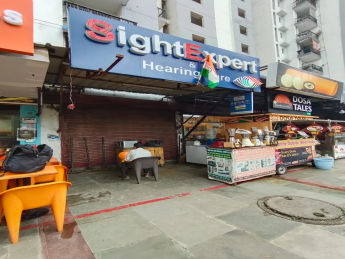RERA Grievances: Protecting Your Property Rights in 2024
Bricksnwall Trusted Experts

Although many people have the desire of owning a
home, getting there can be a difficult process. The RERA Act was introduced in
2016 with the goals of protecting buyers and streamlining this procedure. The
Real Estate Regulatory Authority, or RERA, is a government program designed to
maintain integrity and openness in the real estate industry.
Created in response to declining public confidence
in real estate transactions, RERA requires every state to keep up its official
website. This website offers channels for expedited grievance resolution and
highlights particular state real estate laws.
Homebuyers can use the state's website to file an
RERA complaint if they find differences between advertised services and actual
delivery. The official websites and the complaint procedure are covered in
detail in this article.
Bringing an RERA Case
Who Is Able to Complain Under RERA?
If a builder, developer, promoter, or real estate
agent violates any of the rules outlined in the RERA Act, homeowners have the
option to submit an RERA complaint against them. It's an easy and simple
approach to get your complaints about the property addressed.
Any purchaser of a house may protest if:
1.
The transfer of ownership is not completed on time.
2.
The construction is of low grade.
3.
The property has poor ventilation.
4.
The costs of upkeep are excessive.
5.
Unresolved claims exist regarding the property.
6.
The developer/builder is refusing to give the buyer
the cost breakdown of what they will need to spend on the property.
There are two main reasons why RERA cases are
filed. Either to withdraw from the project or to demand interest on delayed
possession are the options. The builder then returns the money that was paid
along with the relevant interest amount.
Implementation of RERA
The RERA Act's Section 40 outlines the procedures
for carrying out the adjudicating officer's or RERA authority's rulings. This
money will be recouped from the developer as arrears inland revenue if they
fail to comply with the RERA tribunal's rulings, which may include monetary
compensation or interest paid on delayed possession. An execution application
may be submitted by the impacted party to ensure that the tribunal's orders
are carried out.
Upon application, a hearing is held during which
the other party's reasonable explanations for non-compliance are taken into account.
If not, it would issue a Recovery Certificate (RC) and enforce the collection
of land revenues through collectors. Since the execution application fee
fluctuates,
How may a builder file a complaint with RERA?
To effectively register your RERA complaint, adhere
to these simple steps.
Go to the official RERA website of the state first.
Now look for the website's complaint registration page.
You will be taken to an RERA complaint form after
clicking on the complaint registration page or link. You must provide all the
information requested regarding your complaint here.
Please be aware that you will need to provide
supporting documentation as well as certain personal information, such as your
name, address, and phone number. This is to confirm that the complainant is who
they say they are.
After completing the form correctly, you can submit
a complaint by paying Rs 1000. You must pay Rs 5000 to an adjudicating officer
if you want to file a complaint.
This is a quick and easy online transaction to
finish.
What is the status of your RERA complaint?
You can check the status of your RERA case as well
as your project's RERA approval on the state-specific RERA website. According
to the Real Estate ( Regulation and Development) Act of 2016, each state must
have its own specialized RERA portal.
NCDRC cases that are still pending
Formerly, the harmed party could not file the same
complaint with RERA if there was a case ongoing at the National Consumer
Disputes Redressal Commission. This is so because there are no provisions in
the RERA Act that allow for the transfer of ongoing real estate matters to the
RERA authorities. However, if the offended party is not pleased with the
RERA's ruling, they can reapply with the same complaint.
The duration of RERA-mandated dispute resolution
According to the RERA criteria, a complaint must be
resolved by the rera authority within 60 days of the aggrieved party filing it.
Homebuyers' complaints have been swiftly and effectively resolved thanks in
large part to the RERA conciliation forum. This reduces the amount of money and
time lost on lawsuits.
The advantages of bringing an RERA lawsuit
RERA was created with house purchasers in mind.
Consequently, all policies and procedures have been established to fully
safeguard the interests of the buyer. Among the advantages of bringing a
complaint under RERA are the following:
Both real estate salespeople and builders have contracts
that require them to keep all of their promises. Agents who violate this risk
having their license revoked or being ineligible to deal in certain real estate
transactions.
Sincere responses are given to all RERA complaints,
and concerns are resolved as soon as possible through the FastTrack
process.
The other purchasers doing business with the same
builder/agent are likewise alarmed when a buyer receives a grievance redressal
against a specific customer.
Since RERA only addresses complaints and concerns
pertaining to real estate, it has benefited purchasers by offering dependable
resolutions for property disputes.
RERA allows homebuyers to approach consumers to
resolve disputes, according to SC.
On November 2, 2020, the Supreme Court rendered a
landmark decision, holding that a disgruntled buyer of a house may file
complaints with RERA and the Consumer Court. Numerous developers had previously
expressed dissatisfaction with the customer's inability to lodge the identical
complaint with these organizations. This was rejected, though, and it became
necessary to offer prospective homeowners the option of registering complaints
under the Consumer Rights Act or the RERA Act.
Grievance redressal mechanisms and RERA
Let's examine the operation of the complaint
redressal procedure now that you are aware of how to lodge a complaint under
RERA against a building.
1.
Prior to seeking assistance, the buyer of a
property must ascertain whose jurisdiction their complaint falls under and who
the appropriate authorities is. Any State Tribunal, RERA authority, or
Adjudicating Officer in an Indian state is the appropriate person to receive
complaints from you.
2.
Every state has a resource (online or offline) for
filing complaints.
3.
All necessary information on the transaction,
including all relevant party details, should be included in the
complaint.
4.
The complainant is subsequently given an RERA
complaint number by the authority so they can monitor the status of their case.
5.
After that, the complainant gets a call and
is provided all of the necessary document copies. The other party involved
should likewise receive these materials.
6.
Subsequently, the complainant or the builder must
submit a response to the complaint.
7. Now, the onus is on the relevant authority to order the builder's acts or what the other party ought to do. If someone disobeys this instruction, they risk facing jail time or a significant financial fine.




